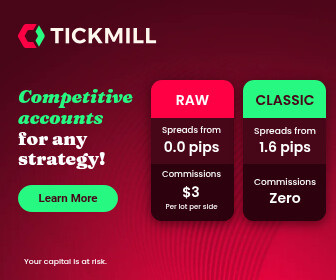Understand the difference between standard and raw spread accounts, how brokers earn through spreads, swaps, and commissions, and how to choose the right account type for your trading style.
Standard vs. Raw Account: Does It Really Matter?
Yes, it does. And if you’re serious about trading, you
should know exactly how your broker earns because it directly affects
your trades.
Before we get into which account type to choose, let’s break down how brokers make money:
How Brokers Earn from Your Trading
1. Spread
The difference between the bid and ask price. This is the
most common way brokers earn, especially in standard accounts. You don’t
see a separate charge, but it’s already included in the price.
Example: If EUR/USD has a 1.2 pip spread, and you buy at
1.1000, you’re already in a -1.2 pip position when you enter the trade.
2. Swap (Overnight Fee)
A small fee (positive or negative) is charged if you hold
trades overnight. This is based on the interest rate differential of the
currency pairs.
Traders who hold positions for multiple days or weeks often
pay or earn swaps depending on the pair and trade direction.
3. Commission
This is a direct charge per trade, usually applied to raw
or ECN accounts. Instead of marking up the spread, the broker charges a
flat fee per lot.
Example: A raw account might have near-zero spreads but
charge $6–$7 per round-turn lot.
So Why Does This Matter
When Choosing an Account?
Because your account type determines how you pay fees,
and that impacts your overall profitability.
Some traders become overly cautious when they see wider
spreads in a standard account. They feel like brokers are “eating” into their
trades, even if they’re only trading small positions. But here’s the truth:
Regardless of the account you choose, fees are
unavoidable.
Forex brokers are businesses. They provide you with access to global liquidity, tech infrastructure, platforms like MetaTrader, and customer support, all of which are not free to run. Whether it’s via spreads, commission, or
swaps, they must earn.
The key is understanding which account type suits your strategy and how to minimize costs by choosing brokers with tighter spreads or lower commissions.
Standard Account vs. Raw Account
Let’s compare these two popular account types:
|
Feature |
Standard Account |
Raw Spread Account (ECN) |
|
Spreads
|
Marked-up
(1.0–2.0 pips avg.) |
Near-zero
(0.0–0.2 typical) |
|
Commission |
None
|
Charged per
lot (e.g., $6/lot) |
|
Cost
Visibility |
Hidden in the
spread |
Clearly shown
per trade |
|
Best For |
Swing,
position traders |
Scalpers,
high-frequency traders |
|
Trader
Behavior |
Prefers
simplicity |
Prefers
precision |
Traders Who Prefer Raw Accounts
• They set precise Stop Loss (SL) and Take Profit (TP) levels
• They want ultra-tight entries and exits
• They don’t mind seeing commission charges in MetaTrader journals
Traders Who Prefer Standard Accounts
• They are more comfortable with fewer line-item costs
• They are okay adjusting SL/TP to account for spreads
• They do fewer trades with bigger TP/SL margins
The Bottom Line: Broker
Will Profit, And That’s Fine
Yes, your broker earns from you trading. You can complain
about fees, but at the end of the day:
• They maintain server access and liquidity
• They handle order routing and support
So instead of feeling like you’re being “robbed,” focus on
improving your trading skills so you can adapt regardless of account type.
Final Tips Before You
Choose:
2. Check broker conditions – Some brokers offer tighter spreads and lower commission combos. Look around.
3. Test both accounts – Open a demo or micro live account on both and feel the difference.
4. Read the fine print – Some brokers apply commissions “per side,” others “per round turn.” Always check.
Real Talk:
Looking for an account with zero spread, zero commission,
and zero swap is just unrealistic. Trading isn’t free, and neither is
access to global markets.
The smart move? Choose the broker and account type that matches your strategy and offers transparent, fair pricing.


